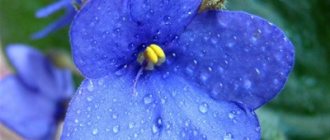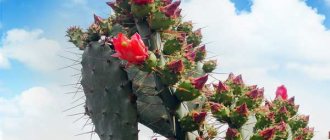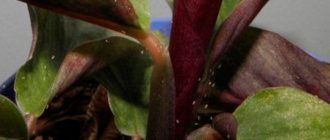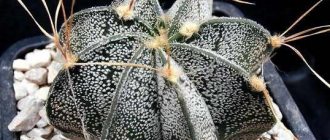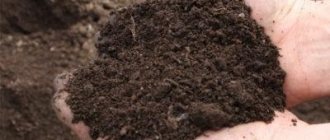The name Opuntia combines a species of plants belonging to the Cactus family. The prickly pear genus is the largest - there are more than 190 species. Many people love cacti for their unusual appearance. These plants sometimes take on very bizarre shapes. And during flowering they present an amazing sight. Large bright buds blooming on thorny shoots amaze with their beauty. Not everyone knows that prickly pear produces edible fruits that are used not only in cooking, but also in medicine and cosmetology.
Where does it grow
Cacti form a family of perennial flowering plants. They were first discovered during expeditions to North and South America, and then brought to Europe. The species of opunts is the most common. In addition to Asian countries, Africa and Australia, Opuntia grows in the Mediterranean. In our country, the plant is found on the shores of the Black Sea, in Crimea. Prickly pear adapts well to different types of climate. It prefers semi-arid habitats. The cactus can grow on dirt, sandy, rocky soils. It only does not tolerate humid tropical climates and severe frosts. It is found on all continents except Antarctica.
Reproduction
If you suddenly want to propagate Opuntia, you can do this in two ways:
- Seeds;
- By cuttings.
Seeds
This method is not very popular, because it is quite problematic. Not all seeds germinate, and it even happens that none at all. We have previously written about how to grow cacti from seeds, so the principle here is exactly the same, but there is one difference. Opuntia seeds have a rather dense shell, so they should first be rubbed with a file or sandpaper, and then soaked in potassium permanganate.
And then everything is as usual. Soil is poured into the greenhouse, holes are made there and seeds are planted. After this, you need to wait for shoots. The first transplant is performed after 3 months. More details are written in our separate article.
Cuttings
The most preferred method, which is much more effective than the previous one. There is nothing complicated about cuttings. First of all, take a well-sharpened knife and select any healthy shoot on the stem. Then, it should be cut off and then placed in an upright position in a place where it can dry a little. Usually it takes 3-4 days until a film appears at the cut site.
Also read: Mammillaria is a favorite among cacti!
Next, the dried cuttings should be planted in a container with wet sand, to a depth of 5-6 cm. The container itself must be covered with cling film and allowed to be ventilated periodically, as well as occasionally watered. As soon as the seedling has roots, it should be transplanted. How to do this can be read above.
What does it look like
Prickly pear is a tree-like shrub with straight or flat branches creeping along the ground. The branches look like articulated, flattened segments. The height of the stems can reach three meters. The trunk of such plants is the same as that of trees: covered with bark, with a diameter of up to 40 cm. The trunk part is short, mainly prickly pear consists of highly branching fleshy segments - cladodes, which are modified leaves. The segments are elliptical in shape and, as a rule, they are light green in color.
A distinctive feature of prickly pears is the presence of glochidia. These are sharp, hard spines equipped with teeth. They grow on the surface of reduced leaves and around the areoles - the buds of the cactus. Buds form from the buds during the flowering period. All prickly pears have flowers similar in structure and shape - large, with a large number of petals, in bright colors. The color range varies from yellow to red, violet, purple. Plants of the prickly pear species are very diverse. They can be of different shapes, sizes, shades, but they all have a similar structure.
Transfer
The plant is replanted only when its roots fill the entire pot. The procedure is carried out in late spring. The succulent is transplanted into a larger pot than the previous one. The soil for growing the plant should be the same as for cacti, that is, poor and airy - based on peat and sand. Proper drainage and holes in the bottom of the container to drain excess water are important. When replanting, you can place broken pieces of ceramic pot, stones or coarse gravel at the bottom of the container.
When replanting plants, be careful with thorns, which can cause inflammation of the epidermis. All work should be done with gloves or the plant should be covered with hard paper.
Fruit
After flowering, fruits form in place of the buds located along the upper edge of the segments. Their color depends on the type of cactus. It can be anything: light green, pink, orange, red, purple. Prickly pear fruits are edible. Aborigines have been eating them for a long time. In America, the common name for the fruit is “Indian fig”. Their pulp is juicy, aromatic, and tastes like berries. There is a seed pod in the center of the fruit.
They ripen between September and November. In some plant species, the berries weigh up to 300 g. The yield of prickly pears is high. From 10 sq. m you can collect up to 200 kg of berries. The fruits are collected using long sticks with a rounded knife at the end. The thorns that come across during harvesting are swept away with brushes.
Varieties
In our country, cacti of this species are grown in the south in open ground, and in the middle zone - in greenhouses. Popular varieties:
- White-haired
- Berger
- Main
- Lindheimer's prickly pear
- Opuntia subulata
White-haired
This species is common in Mexico. Growing in natural conditions, the shrub can reach five meters in height. The surface of the leaves is strewn with white spines, giving the plant the appearance of hair. During flowering, beautiful yellow calyxes appear. Looks interesting in indoor flowerpots.
Berger
The plant is low, stretches up to one meter in length. This variety attracts the attention of gardeners with its unpretentiousness. Blooms with bright red buds. The leaves are thick, light green in color.
Home (main)
Plants of this species have an interesting surface color. It may be bluish or with a red tint. The flowers are pink, with large petals. Habitat is South America.
Lindheimer's prickly pear
Looks great during the flowering period - large terry buds of a sunny yellow hue bloom in abundance on the crowns of the plant. Can grow up to 3-3.5 meters. Therefore, it is recommended to plant this variety in open ground. The berries are purple in color.
Opuntia subulata
Comes from Peru. A distinctive feature of the species are the spiny shoots protruding from the trunk and branches. The flowers are pink, orange-red. This cactus looks more unusual than other prickly pears. The variety is not tall - it grows a maximum of 1 meter.
Care
Lighting
The cactus loves light very much, especially when there is a lot of it. The best option would be a window sill located in the south or southeast. It is also worth noting that it is better not to place the cactus directly under the sun so that it does not get burned. It should be gradually accustomed to the bright sun.
As for the winter period, additional lighting is not needed; the plant does well without it.
Watering
The plant should be watered with warm water, you can even boil it, but this is not necessary. In the warm season, the cactus should be watered frequently, not allowing the soil to dry out. Usually this is once a week, i.e. 4 times a month. However, if it is very hot outside and the soil dries out quite quickly, then the plant should be watered every 5-6 days.
In winter and during the dormant period, watering should be minimal. As a rule, once a month, maximum 2. The water is warm, 20-30 degrees, but its quantity should be 3-5 tablespoons.
In the summer, spraying from a spray bottle will also not be superfluous.
Temperature
As for temperature, Opuntia feels very good at a temperature of 25-35 degrees Celsius. If we talk about wintering, then at this time it is better to remove the cactus to a place where the temperature is 8-12 degrees. Also, temperature changes have a positive effect on development, since in natural conditions this happens quite often.
Air humidity does not matter; Opuntia tolerates both high and low humidity very well.
The soil
In most cases, the cactus grows very well in regular cactus soil, but this applies more to plants that are not yet five years old. For more mature cacti, it is recommended to use soil with a high content of sand and clay. Adding compost and a little ash will also be a plus. It is better not to use peat.
And don’t forget about crushed stone or crushed brick chips, which should be mixed with the ground.
Fertilizers
Feeding should be done during the period of active growth - usually spring. But you can apply fertilizers from the beginning of spring to the beginning of autumn. The best option would be fertilizers containing calcium, potassium and phosphorus, but there should be a minimum amount of nitrogen, as it negatively affects the development of the cactus, and sometimes even leads to the death of the plant. Feeding should be done once a week or 10 days, not more often.
But it is better to avoid fertilizing during the dormant period, since at this time it is better not to disturb the plant, and it can only cause harm.
Transfer
The replanting process is simple, and it must be done every 2-3 years, because during this time the soil wears out a lot and needs to be replaced, and the cactus will not grow in old soil.
Also read: Cactus - Euphorbia Euphorbia: 5 popular domestic species + care
For transplant you will need:
- Pot;
- Priming;
- Drainage (expanded clay, crushed stone, crushed brick).
In a new pot, a layer of drainage, 3-4 cm thick, is poured onto the bottom. Then, a layer of soil is poured on top. You can use ready-made soil if the plant is not yet 5 years old, or you can prepare the mixture yourself. To do this, in proportions 1:1:1:1:1:2, mix earth, sand, clay, crushed brick, ash and compost. Be sure to mix everything well.
So, now you should remove the cactus from the old pot. To do this, carefully turn the plant over and tap the bottom of the pot. Once you do this, shake off the old soil from the root system and check the roots themselves. Rotten ones should be removed, otherwise they can cause the development of diseases in the future. After this, place the cactus in a new pot and fill it with soil, but not completely - leave 1-2 cm.
That's basically it. After transplanting, you can water it with warm water.
Rest period
From the end of October to the end of February, Opuntia, like many other cacti, enters a dormant period. During this time, try not to touch or disturb the plant. Watering should be minimal, as described above. Under no circumstances should you turn, move or carry the plant, as during this period it is very sensitive and in case of the slightest stress, this will negatively affect flowering.
Bloom
If we talk about the flowering of the cactus itself, it occurs in the spring. Usually this time falls in May or even June, but this happens less frequently. The first flowers appear only in the third, and sometimes even in the fifth year, so don’t be too nervous if your “eared little one” hasn’t bloomed.
However, for some, even after this period, flowers do not appear, and then they begin to look for information on how to make the plant bloom. The answer is “No way.” The only way to make your pet bloom is to follow all the rules for caring for it. If the plant does not bloom, it means you are doing something wrong.
Benefits and composition
Prickly pear fruits are very nutritious and healthy. You can eat not only the berries, but also the cladodes of the plant. All parts of the plant contain dietary fiber, water, starch, and glucose. Organic acids are obtained from the pulp: linoleic, stearic, palmitic. Vitamin composition:
- ascorbic acid
- a nicotinic acid
- thiamine
- riboflavin
- pyridoxine
- folic acid
- beta carotene
In addition to these substances, the plant contains calcium, magnesium, iron, and manganese. Calcium is necessary for dental health and skeletal formation. Magnesium plays an important role in the functioning of the cardiovascular system. Iron is an essential component of most body cells. It is part of red blood cells and supplies oxygen to tissues. Manganese affects the functioning of the thyroid gland and maintains blood sugar at the desired level.
Ascorbic acid is involved in the formation of bone tissue, fermentation and metabolism processes. B vitamins are elements necessary for the body to function normally. They participate in intercellular processes and affect hormonal balance. Eating prickly pear fruits and pulp has the following effects on the human body:
- supports immunity, improves hematopoiesis;
- helps cleanse blood vessels of cholesterol deposits and strengthens their walls;
- regulates blood pressure;
- stabilizes the digestive tract, improves smooth muscle motility;
- prevents the occurrence of cancer;
- calms the nervous system, eliminates insomnia and anxiety;
- improves the functioning of brain cells, strengthens memory.
Application
All parts of this plant are used in different fields. Flowers, cladodes, berries are used in:
- Cosmetology
- Cooking
- Agriculture
- Traditional medicine
Prickly pear flowers produce valuable oil that has anti-aging properties. It is used in the preparation of face and hair masks. It is also added to anti-aging creams. Vitamin E restores cellular structure, increases the turgor of the epidermis, nourishes and moisturizes it. This is an antioxidant that helps prolong skin youth.
Organic acids obtained from cactus pulp are used to make masks and creams for dull skin. Their use helps tighten problem areas of the face and neck and regenerates the cellular structure. Prickly pear fruit extract is added to tanning products and ointments for burns.
Cactus branches and leaves are fed to domestic animals. Thorns are removed by burning the collected parts of the plant. After heat treatment, the pulp becomes softer and more palatable. For feeding, fodder species of prickly pear are used, which are grown specifically for this purpose.
Prickly pear juice is used in folk medicine. Compresses are made from it to heal wounds and accelerate bone healing in case of fractures. These procedures also help with rheumatism and joint pain. Local residents use decoctions of dried fruits to treat vitaminosis and diseases associated with weakened immunity. Berry tincture helps against urinary tract diseases. Drinks from the flowers and roots of the plant improve the functioning of the prostate gland in men and prevent prostatitis.
Not only prickly pear berries are used in cooking, but also the pulp. Young shoots, the size of which is no more than 10 cm, are suitable for consumption. They are cut and eaten fresh or processed. Cladodes can be dried, pickled, stewed, baked. The Indians have long made various drinks using the pulp of cacti.
Prickly pear fruits have a more delicate and pleasant taste. They are eaten raw, and the following dishes are also prepared from them:
- sweet salads;
- jelly, marmalade;
- candies;
- preserves, jams;
- juice, wine, cocktails.
Recipes
Before starting cooking, the cladodes should be cleared of thorns and rinsed well. The berries must be peeled.
Omelette
This is a traditional Mexican dish. To prepare it you need prickly pear pulp, 2-3 chicken eggs, two tablespoons of flour, grated cheese, and spices. The prickly pear leaf must be cut so that it remains whole at the base, and the rest is strips 1 cm thick. The leaves are boiled for 20-25 minutes until soft. The eggs are broken into a cup, mixed with flour, and salted. The cactus pulp is dipped in batter and placed in a frying pan with heated olive oil. Fry on both sides, add spices. Before serving, sprinkle with grated cheese. You can eat the omelette with tomato or cream sauce.
Prickly pear salad
To prepare you will need: 2-3 prickly pear leaves, cucumber, celery stalk, canned peas. The cactus pulp is soaked in cold water for 15 minutes. Then the top layer of the peel is cut off. The leaves are cut into cubes with a side of 1 cm, brewed with boiling water for 10-15 minutes. This is necessary so that they soften and acquire a pleasant taste. Chop the cucumber and celery and place in a salad bowl. Pieces of prickly pear and peas are also added there. The salad is dressed with balsamic sauce. You can add a pinch of ground chili pepper.
Jelly
To make a beautiful jelly, you need to take prickly pear berries that are red, yellow or cherry in color. For half a kilogram of fruit, take 500 ml of water, two tablespoons of sugar, and a bag of gelatin. The berries are peeled and cut into slices. Place in a blender and blend until pureed. Gelatin is diluted with a small amount of warm water. Berry puree is poured into a pan of water and brought to a boil. Then cook over low heat for 10-15 minutes. The swollen gelatin is poured into the mixture and stirred. The mass is cooled, poured into molds, and set to freeze.
Interesting Facts
The Mexican Indians have a legend that the ancient Aztec state of Tenochtitlan was founded on the site where a large prickly pear shrub grew. At that time, the Aztecs did not have their own settlement and wandered through the mountains. One day they saw a cactus on which an eagle was sitting, having dealt with a large snake. This was interpreted by the leader as a good sign, and the Indians decided to found a city on this place. Now there is modern Mexico City (the capital of Mexico).
The Sicilian province annually hosts a festival dedicated to prickly pear. It is celebrated in October, when the harvest has already been harvested. The village is decorated with garlands and food tents are set up. The main treat is the berries of the plant, but there are many other goodies as well. You can taste a delicious liqueur made from prickly pear fruits, try different dishes from the queen of the holiday. At the end there is a fireworks display.
Popular signs say that prickly pear in the house protects against the evil eye and attacks from ill-wishers. If the plant is placed on a windowsill or table, then sorcerers will not be able to damage the owner. And according to modern concepts, cacti neutralize electromagnetic radiation emanating from a computer, TV, etc.
There is also a sign that prickly pear in the house is a sign of divorce. The plant with its energy attracts lovers and brings relationships to disintegration. In the Middle Ages, ladies used this ability to eliminate an annoying spouse. There is also an opinion that the cactus lives well in families where scandals and quarrels are frequent.
However, you should not blindly believe in prejudices. A passion for cacti indicates an unusual nature, a love for everything extraordinary. Blooming prickly pears are a wonderful interior decoration that creates a positive mood for all household members.
Prickly pear blossom
Care during flowering
Prickly pear rarely blooms at home. It's hard to say what this is connected with. Either because it grows too slowly, or maybe because it is almost impossible to create for it the conditions in which it lives in nature. However, if you are lucky and buds form on your cactus, try not to spoil your holiday with an annoying mistake:
- do not rearrange or rotate the flower pot;
- do not replant the plant;
- do not change anything in care - both watering and fertilizing should be carried out strictly in accordance with the regime.
If you violate at least one of these rules, the plant may shed its buds, or they will degenerate into vegetative shoots, and a blooming prickly pear will remain your pipe dream.
Prickly pear after flowering
When the plant has flowered, its watering is gradually reduced, fertilizing is stopped completely, and then the cactus is transferred to an unheated room, where it will remain dormant at a temperature of 5-7 ºC without moistening or fertilizing until the beginning of the next growing season.

